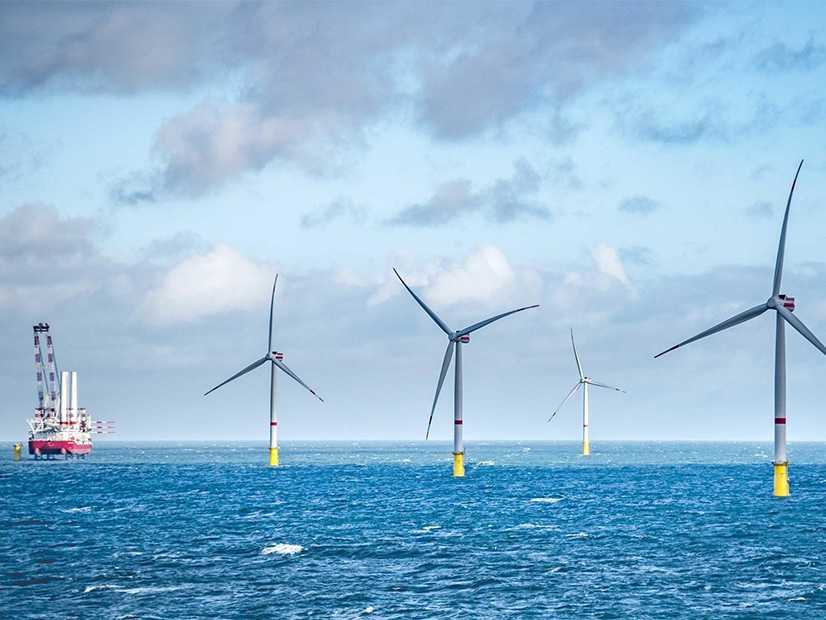The Bureau of Ocean Energy Management issued a notice of intent to prepare an environmental impact statement (EIS) for the Vineyard Wind South project, which includes the 804-MW Park City Wind facility under development by Avangrid and Copenhagen Infrastructure Partners.
The NOI initiates a 30-day public comment period to define the scope of the EIS, the major permitting study required for project approval.
Park City Wind, selected through a competitive bid process in December 2019 by the Connecticut Department of Energy and Environmental Protection (DEEP), will be built in a federal lease area located approximately 60 miles east of the state and provide roughly 14% of its electricity supply.
“We are eager to participate in this important next step on the Park City Wind project, which is critical to the decarbonization of our regional electric grid and provides a positive boost to Connecticut’s clean energy economy,” DEEP Commissioner Katie Dykes said. “Vineyard Wind has committed to being an engaged partner with environmental and fisheries stakeholders, and we will continue to work with them and all stakeholders to ensure that this crucial project proceeds with appropriate mitigations considered.”
If approved by BOEM, Vineyard Wind would construct and operate a 2,000-2,300 MW wind farm off the coasts of Rhode Island and Massachusetts and develop it in phases. Park City Wind is the first phase and would contribute to Connecticut’s statutory mandate of 2,000 MW of OSW by 2030 through Vineyard Wind’s power purchase agreement with Connecticut’s Public Utilities Regulatory Authority.
Vineyard Wind is actively competing for PPAs for the second phase of Vineyard Wind South, which would provide 1,200 to 1,500 MW of OSW to the Northeast, according to the NOI.
During the 30-day public comment period, BOEM will hold three virtual public scoping meetings and accept comments to inform the preparation of the EIS. BOEM’s scoping process is intended to identify what should be considered in the EIS.
There will be multiple opportunities to help BOEM determine the essential resources and issues, reasonable alternatives, and potential mitigation measures to be analyzed in the EIS throughout the scoping process.
Charles Rothenberger, an attorney for Save the Sound, said the Biden Administration “has come out swinging” with its goal of 30 GW of OSW by 2030 and with progressive agency appointments like BOEM Director Amanda Lefton, which has made “clearing the backlog of these pending projects a priority.” Before working in state and federal government, Lefton was deputy policy director for The Nature Conservancy in New York.
“We recognize that offshore wind is a critical and fairly significant part of what the region needs to do to meet our clean energy goals to reduce our carbon emissions and to ensure that we’re powering the need to transition to electrification of our building and transportation sectors with clean power,” Rothenberger said.
He added that Save the Sound wants to ensure that projects like Park City Wind are “sited and operated in the most environmentally responsible manner possible.” Rothenberger said DEEP established a Commission on Environmental Standards that convened and released a report in 2019 on minimizing and mitigating impacts from the construction and operation of OSW facilities.
The commission has been on hiatus since the original procurement. However, Rothenberger wants to see it become more active as more projects are solicited and those projects are permitted and developed.
OSW technology is “advancing by leaps and bounds,” Rothenberger said. That helped Vineyard Wind I, which had significant permitting process delays during the Trump administration. Rothenberger said that delay worked to the project’s overall advantage.
“That additional time did allow them to take advantage of some new design features using larger turbine blade sizes, which allowed them to then shrink the number of turbine installations that would be needed and shrink the overall footprint of the project, which is certainly desirable,” Rothenberger said. “We’re certainly hoping moving forward that all of these permitting processes retain the flexibility to allow projects to take advantage of technological advances.”
Gravity-based foundations, as opposed to monopile or jacketed foundations used on the Block Island Wind Farm, are one of the potential technological advancements that could reduce the environmental impact of an OSW project, he said.


